Postscript: Much of my initial “work” re Swansea Metro and main line services in 2017 has been superseded by my more formal work with Welsh Government in 2018 and 2019. See my presentation to a Swansea City Deal event in December 2018 , my speech to a similar event early in 2019 and my assessment of West Wales Parkway options. It is also worth noting that not unexpectedly, a new main line along the coast from Britton Ferry to Swansea High Street (as suggested below) does not appear to have a good transport case; there are other more effective ad efficient ways to improve rail connectivity to/from and within the Swansea/Neath area and to deliver faster services to Carmarthen and West Wales.
This is a longer version of the article that appears in the October 2017 edition of Rail Professional and the news items in the Western Mail and on BBC Wales. It also updates my earlier post on this subject…
M Barry 15th September 2017
PS Dec 2022 – A more up to date summary of Metro Development in Wales – including Swansea – can be found here from earlier in 2022>>Wales Metro Update Feb 2022
A radical ~£1Bn investment in rail links to and within Swansea Bay to deliver a major boost to the regional economy:
-
30-minute journeys to Cardiff and 2 hour 15 minutes to London & Heathrow
-
The foundation of a rail based Swansea Bay Metro (See Fig 1)
-
New development and regeneration opportunities across the region
A move beyond a tactical argument about electrification to a more strategic discussion about the vision and future connectivity of Swansea Bay

Figure 1 Illustration of main Swansea Bay Metro schemes
Electrification: yes, then no, then yes, then no…
The electrification of the GWML from London to Swansea was originally announced by the then Labour Government in 2009. This was “held” pending a review by the new Coalition Government in 2010.
Following that review, on March 1st, 2011, The UK Government confirmed the electrification of The Great Western Main Line from Paddington to Cardiff. Having been party of the campaign, I was interviewed on BBC Wales Evening news from Swansea along with the then Secretary of State for Wales, Cheryl Gillan and asked whether the electrification should or would be extended to Swansea; I confidently predicted that it would!
On September 6th the same year, I presented my evidence for the Cardiff Business Partnership to the Westminster Transport Committee as part of their review of High Speed Rail . That submission set out the strategic need to upgrade the Great Western Line from Paddington to Swansea beyond the electrification programme announced in March as a counter to the negative economic abstraction impacts of HS2 on South Wales and South West England. See Figure 2.
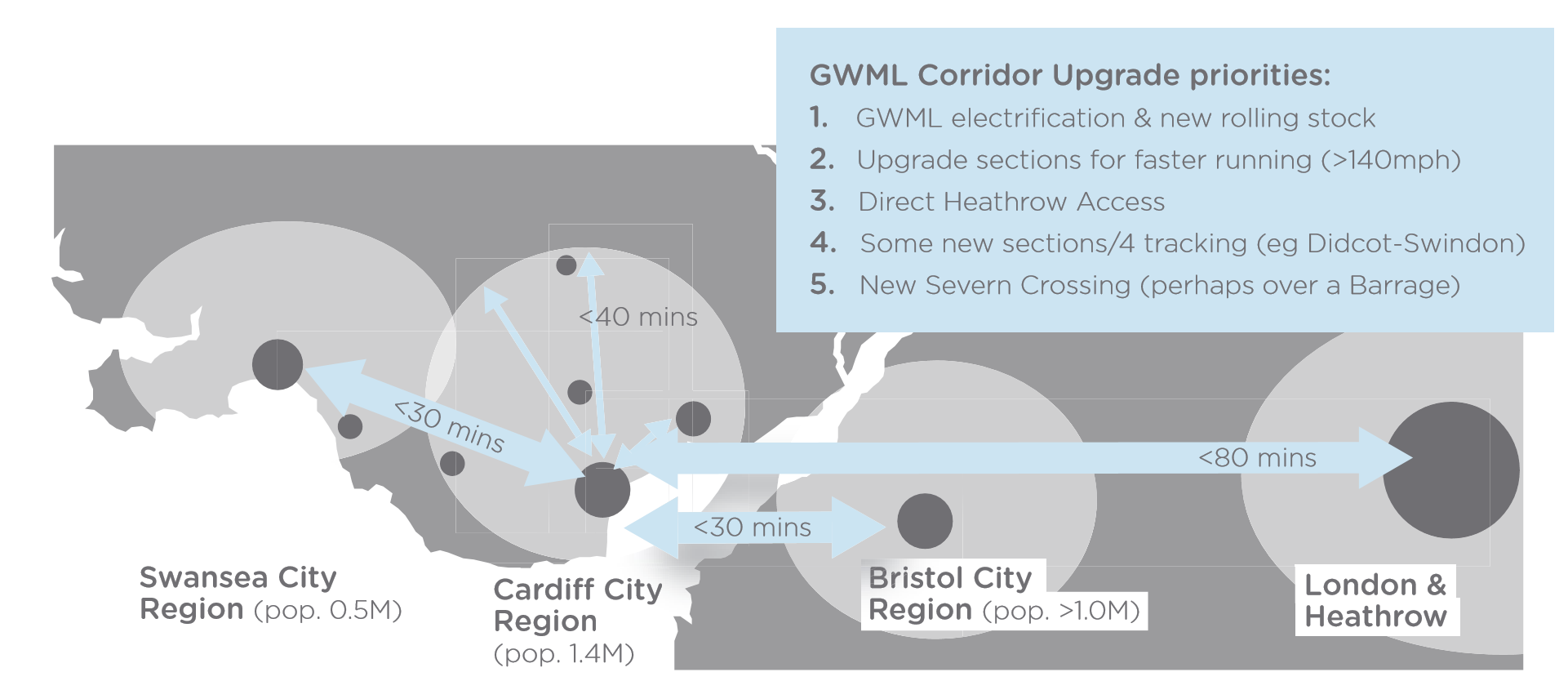
Figure 2 Ambitions for the GWML set out in, “A Metro for Wales’ Capital City Region – Connecting Cardiff, Newport and The Valleys”, in 2011.
Then, in July 2012, the UK Government, seemingly in response to a broad consensus and a positive business case, committed to the electrification of the GWML to Swansea and “electrification” of the valley lines – all part of a major programme across the UK.
All seemed well in the world…. but now, oh dear, what a sorry tale.
Once the DfT decided in 2016 to procure only bi-mode IEP trains for the GWR , it was only a matter of time before the decision to cancel electrification from Swansea to Cardiff was made. That decision in 2016 had less to do with the “benefits” of diesel electric bi-modes (which in reality perform less well, are less operationally efficient and have a poorer environmental profile than the 100% electric trains originally anticipated) and more to do with the escalating costs of, and delays to, the wider electrification programme of which the Cardiff-Swansea section was not immune. I also think that the creation of a Treasury mandated Brexit “contingency” fund as well as increasing austerity, are also contributory factors. In that environment, just arguing for a £000Ms of infrastructure that won’t reduce journey times is perhaps not the best use of one’s time.
An opportunity for bigger thinking?
Swansea to Cardiff in 30 minutes…
So, rather than join the obvious outcry, I want to avoid the politics and focus on perhaps a more ambitious scheme that presents a real opportunity to transform connectivity to/from and within Swansea Bay and one that delivers real economic benefits. Something both Welsh and UK Governments could support.
I think it is possible to deliver Cardiff to Swansea rail journey times of 30 minutes and Swansea to London of 2 hours 15 minutes and at the same time, establish the foundation of a transformational rail based, Swansea Bay Metro. The economic impact of such intercity journey time reductions and enhanced local connectivity would be significant; it would also help drive more demand for rail services which would also enhance the case for electrification.
The current limitations of Swansea’s rail network…
Current journey times to Swansea from Cardiff (which are only 55Km apart) are unnecessarily extended (at least 55 minutes) because of two key constraints. Firstly, the low line speed between Cardiff and Bridgend and secondly, the more challenging need for the main line to meander around to Neath and Skewen between Port Talbot and Swansea. As the crow flies Swansea and Port Talbot are only ~11Km apart but rail journeys take over 20 minutes!
In addition, the promise of faster journeys on the Swansea District Line (SDL) from West Wales to Cardiff is diminished by the commercial reality of a rail line that completely by-passes the revenue offered in Swansea. The other freight line which runs up to the Neath Valley is disconnected and not used for passenger services. The location of Swansea High Street station itself, being a terminus, is also a constraint as it requires through trains to enter and reverse back onto the main route near Morfa adding 10/15 minutes to through journey times. See Figure 3.
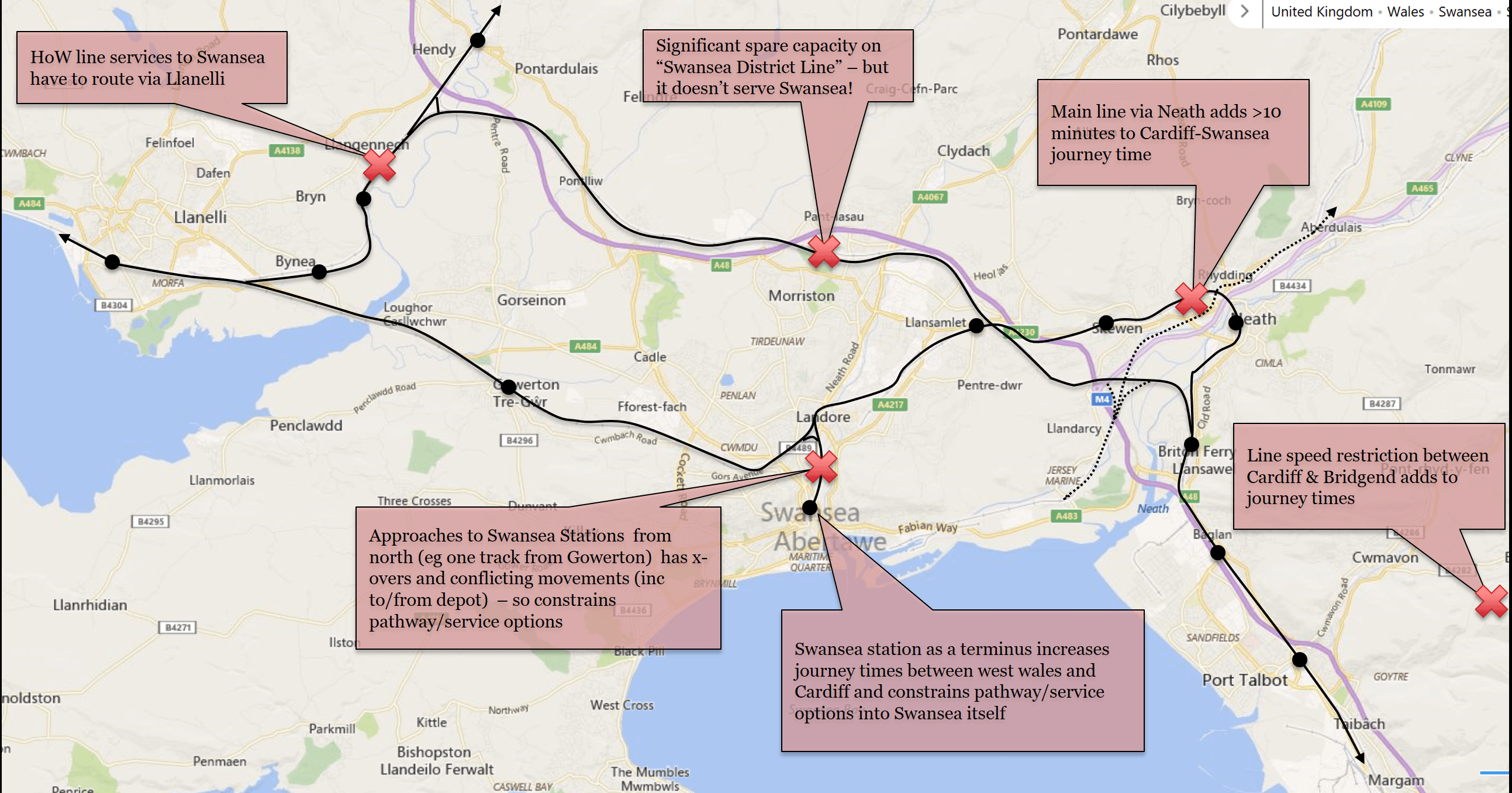
Figure 3 Rail constraints in Swansea Bay
The opportunity for Swansea Bay…
The question then, is what could address all the transport issues and at the same time unlock wider development and regeneration opportunities to help grow the economy of the entire Swansea Bay City Region.
The wider Swansea Bay Region (Swansea, Neath Port Talbot and Carmarthen) has a population of ~500,000 (and the official Swansea Built Up Area just over 300,000 ). Its economy though, is relatively weak compared to other major UK cities as the GVA figures for Swansea show Figure 4.
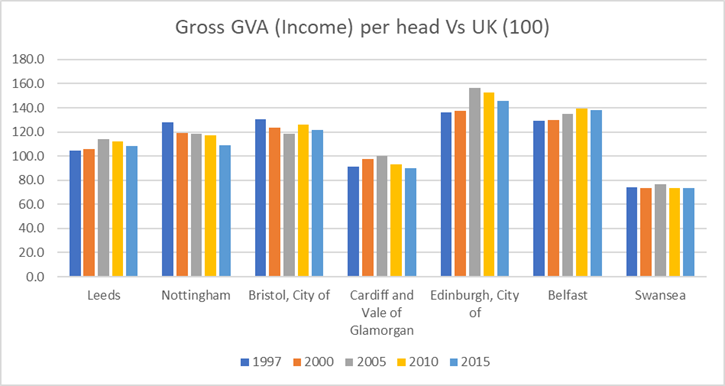
Figure 4 GVA (income) per head of Swansea Vs other UK cities
However, Swansea has significant economic assets and potential; it has a leading UK university and a unique urban coastline – a lovely ugly town as Dylan Thomas put it. The University of Wales Trinity St David’s development at SA1, Swansea University’s new bay campus, Bay Studios and Amazon signpost the development potential along the Fabian Way coastal corridor. The recently announced Swansea Bay City Deal also sets out ambitious plans for life sciences, the digital economy, creative industries, smart manufacturing and energy; it could also be home to a new Tidal Power industry for the UK. Swansea Bay is clearly a region with huge potential.
To realise this economic potential, Swansea Bay needs, like other successful regions, a good transport network to connect its key centres and development areas – Swansea, Neath, Port Talbot, Llanelli, Fabian Way – to help them support more employment from across the region; it also needs better connections to West Wales, Mid Wales, Cardiff, Bristol and London to maximise its potential.
The issue of regional peripherality is also very real given that HS2 will bring all major English cities (apart from Newcastle) within 90 minutes of London ; when one considers that current rail journey times from Swansea to Cardiff, Bristol and London are approximately one, two and three hours respectively the need is clear. Within Swansea Bay itself, road congestion is a real and growing issue (along with the resulting air quality impacts). Like every successful city region Swansea Bay needs more and better quality public transport.
Historical context…
The ideas presented below are not as radical as they sound as there used to be a rich network of railways serving Swansea and Neath See Figure 5. As was the case in many cities across the UK during the 1950s-1970s a lot of our rail infrastructure was pulled up and built over given the huge growth in car ownership and usage at that time Figure 6. The folly of those interventions is only now being recognised give the rapid growth in rail usage over the last twenty years Figure 7.
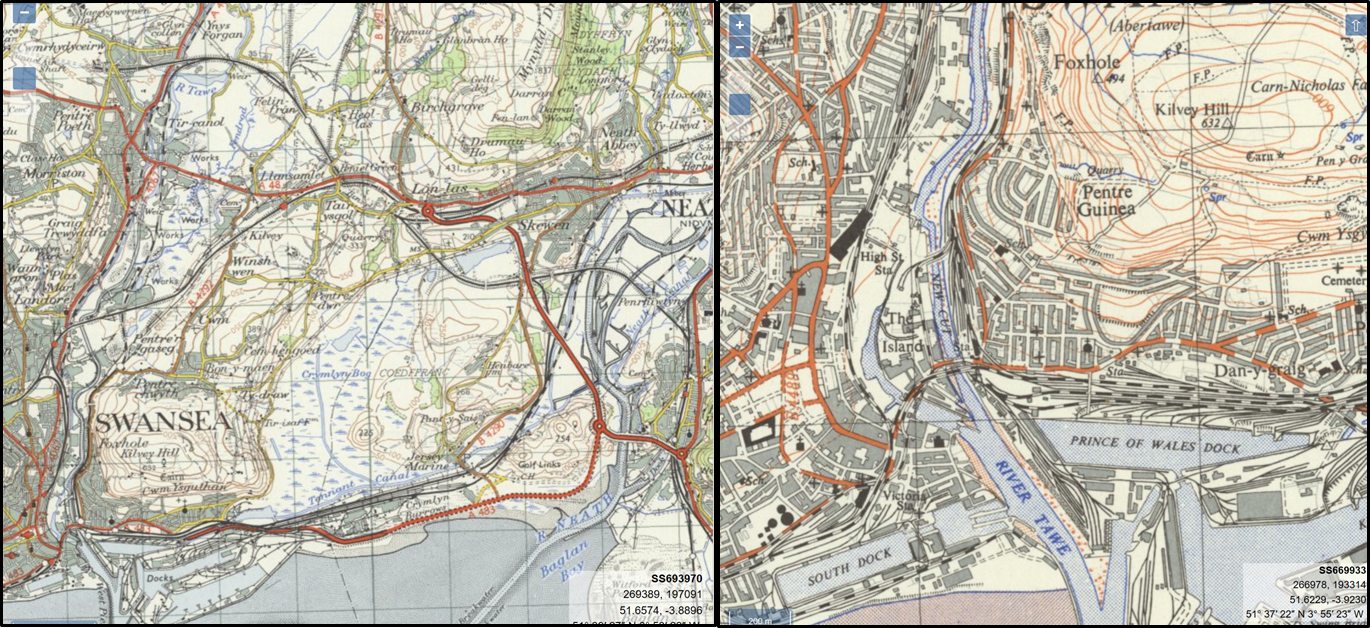
Figure 5 Pre-Beeching rail infrastructure in Swansea
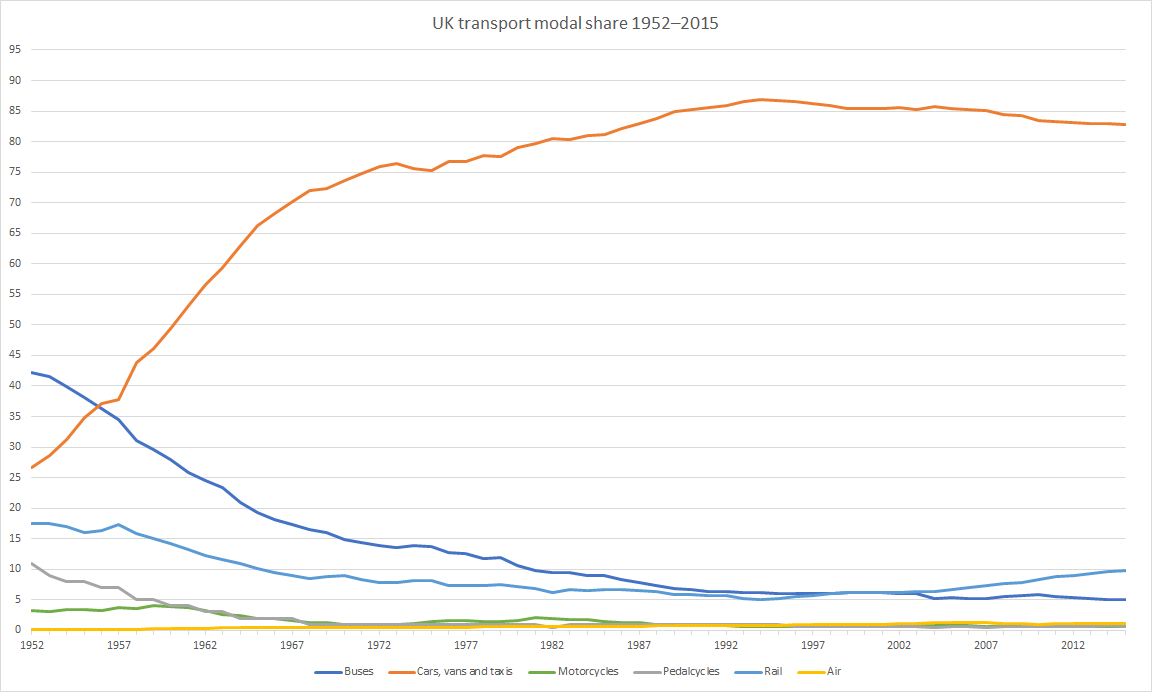
Figure 6 Passenger Transport % in UK 1950 – 2010
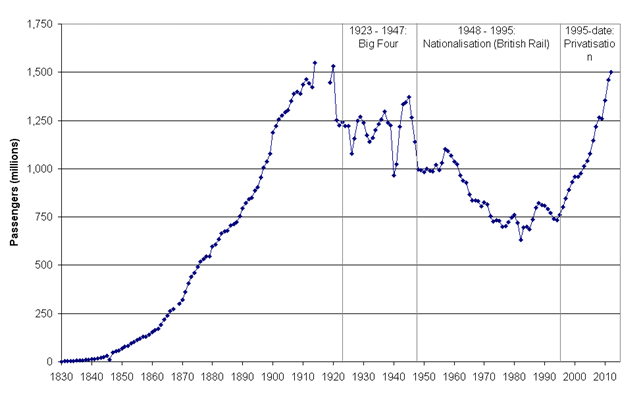
Figure 7 Rail passenger growth, decline & growth since 1830
The idea, A Swansea Bay Metro…
So, here’s an idea (and I give some credit for this to Jim Steer of Greengauge 21 with whom I originally discussed the bones of this project in 2011! ) See Figure 8 below. Let’s upgrade line speeds between Cardiff and Bridgend to at least 100 mph (that may require some new bridges to replace a level crossing or two).
Then, and this is the hard bit (and as stated in the postscript above is now in my view unlikely given more affordable and deliverable options to improve journey times), let’s build a new section of track that spurs off the current line just west of Port Talbot, heads over the River Neath and approaches Swansea along the coast parallel to Fabian Way (in part using some of the old rail alignment); it then elevates over Fabian Way near SA1 on the approach to and over, the River Tawe to an expanded Swansea Central Station (see in red on Figure 8) that has two new through platforms immediately adjacent to and on the eastern side of, the current station building. More ambitious still one could consider relocating the entire station immediately to the south over Parc Tawe.
This ambitious scheme would deliver a more direct route to Swansea from Cardiff 10km shorter than the current route that meanders via Neath. These interventions could reduce journey times between Cardiff and Swansea (with stops at only Bridgend and Port Talbot and to the west Llanelli) to perhaps 30 minutes and reduce journey times from west of Swansea to Cardiff by up top 30 minutes (without having to use the SDL). Moreover, post Great Western Electrification, Swansea to London journey times of 2hr 15 mins could be delivered.
As set out in my evidence to the Westminster Transport Committee in 2011, I also think further interventions on the GWML should aim to reduce Cardiff – London journey times to 90 minutes (and the barriers to this are commercial and network capacity not line speeds) which would bring Swansea within 2 hours of London and Heathrow.
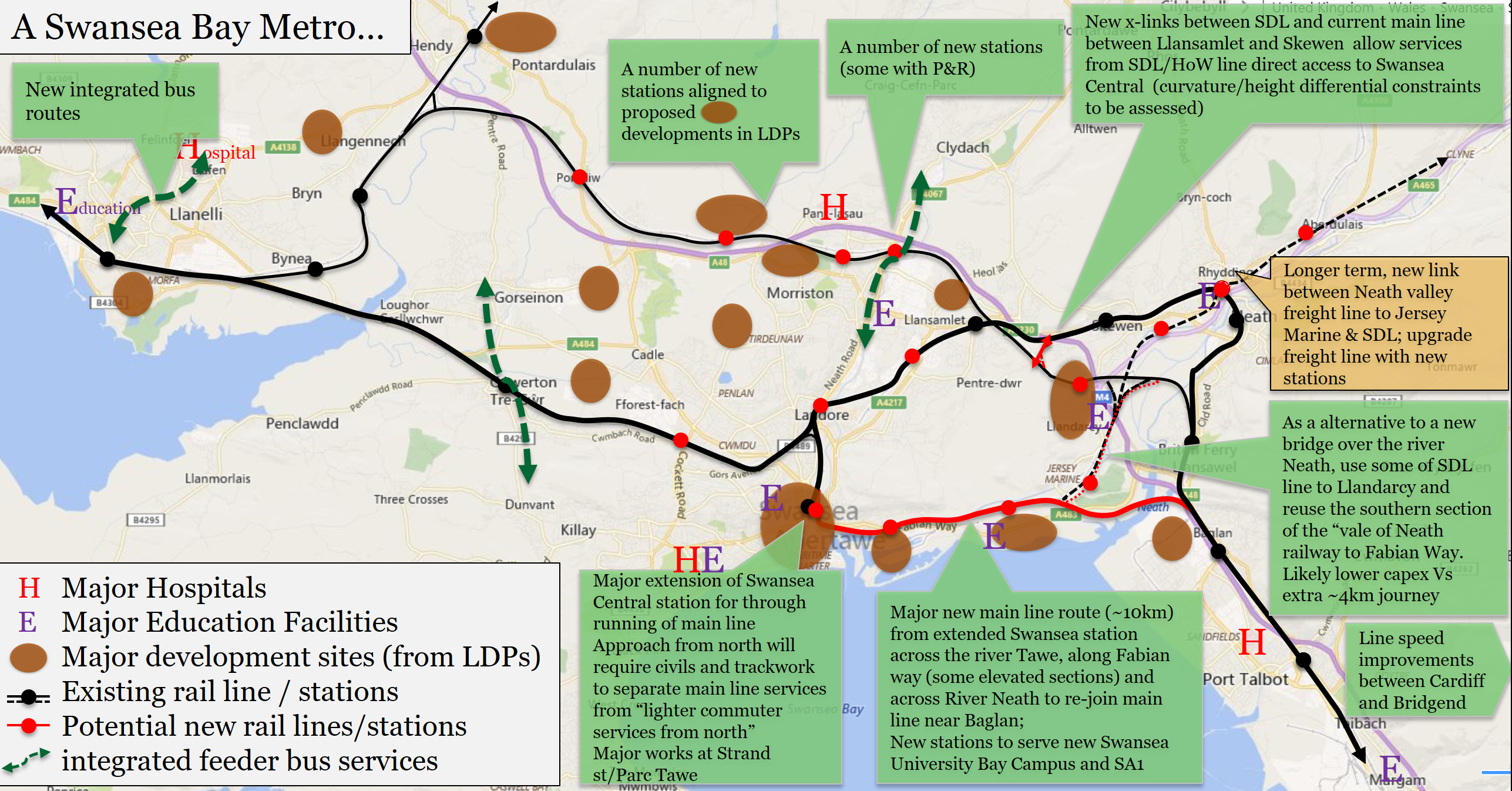
Figure 8 Potential rail interventions in Swansea Bay
To complement this “main line” intervention some new short rail connections between the Swansea District Line (SDL) and the current main line just east of Llansamlet and west of Skewen, would enable SDL trains from both directions to travel onto the current main line into Swansea Station. These schemes would also allow much of the existing line via Neath and the Swansea District Line support new stations and more local services, and enable Swansea commuter service to operate on the lower reaches of the Heart of Wales line, perhaps as far as Ammanford. New stations could serve SA1 and the new student campus on Fabian Way, M4 P&R at Felindre and Llandarcy, the Liberty stadium, etc. See Figure 8. The choice of mode, whether Heavy Rail, Light Rail, Tram-Train etc. would need to be determined for each line as part of a more detailed study.
This package of interventions will improve intra-regional connectivity and more importantly, make Swansea City Centre more accessible to more people across the region enhancing its capacity to support more employment. Other regional centres (Neath, Llanelli and Port Talbot) will also benefit from their enhanced regional accessibility (via faster and more frequent local metro serves). As important, these proposals will also reduce generalised journey times from all the region’s key centres to Cardiff and London as well as West Wales.
This kind of local rail service transformation doesn’t need extensive new capital intensive local rail lines – the investment in the new section of main line (and yes this will be costly) and the connections at Llansamlet/Skewen, free up the existing network for local services and new stations. The Neath Valley railway (currently freight only) could also be incorporated into this network and if tram-train was eventually proven to work in the UK , then an “on-street” route along to the Mumbles could be considered in the longer term. See Figure 9
In parallel, the wider integration agenda needs to be progressed so that bus services are incorporated into the Swansea Bay Metro. This would then extend the “network” to Llanelli’s hinterland, across Swansea and to Clydach, Pontardawe and Ystradgynlais in the Swansea Valley. Better links between Swansea rail and bus stations would also be needed.
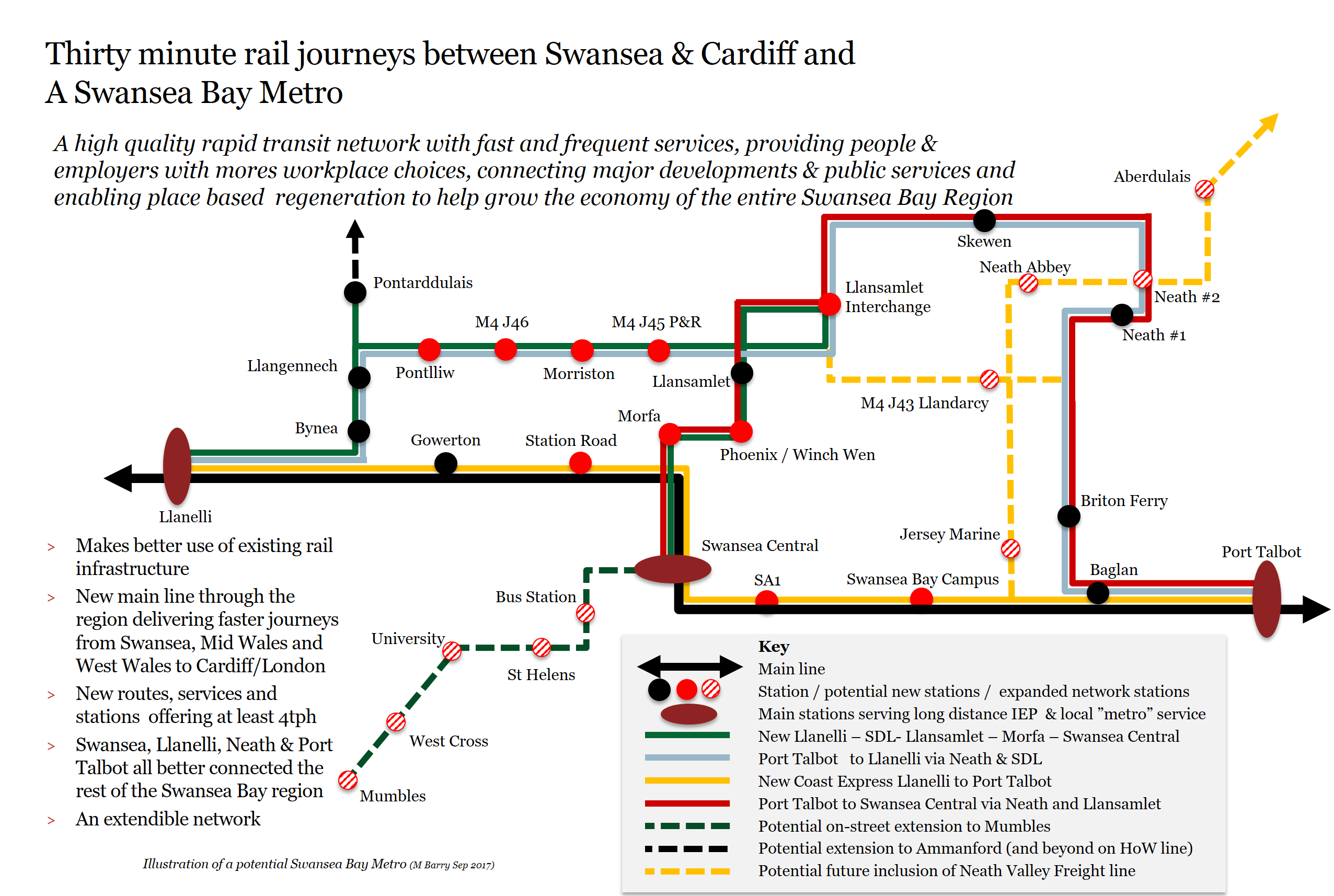
Figure 9 Illustration of a potential Swansea Bay Metro
Wider economic impacts…
To maximise the benefits of these proposals we need to link the development of a rail based Swansea Metro to local land use planning and economic development across all of Swansea Bay. Where are new homes, offices, schools and hospitals; can we make these more accessible to the whole region; do these proposals present new development opportunities? These have to be addressed as part of a regional planning process.
For example, I think there is a clear opportunity in the centre of Swansea at/near Parc Tawe which today is a car based out-of-town retail park. The gateway to Swansea City centre deserves better and the opportunity of an expanded or relocated station and a new through rail route could transform the economic and commercial potential of a site that would be at the heart of the Swansea Bay City Region, only 30 minutes from Cardiff and 2hr 15mins from London. Surely a chance to imagine a new higher density mixed use scheme that can complement the developments at the west of the City Centre and now emerging along Fabian way.
To complement this city centre scheme there are other opportunities across the region. For example, the new housing development proposed at Felindre in the north of Swansea could be enhanced with the introduction of a new station and major P&R on the SDL. A Swansea Bay Metro would enable passengers to use one of the four services an hour to travel to the centre of Swansea in perhaps 15~20 minutes. These accessibility improvements would also help encourage more people to use public transport with consequential carbon reduction and air quality improvements.
Similarly with the incorporation of new rail services and stations on the Neath Valley line, that part of the region could support more sustainable housing that would be within easy public transport access of Neath, Swansea, Port Talbot and the main line. Even longer term such a route could run on to Hirwaun and connect with the south Wales Metro in the Cardiff Valleys.
A similar proposition applies to the currently poorly served communities along the Heart of Wales line from Pontardulais to Llandeilo which could become part of the Swansea commuter network; an extension along the old freight line to Garnant / Brynamman may also be possible in the longer term.
It should be stressed though, that all these benefits are dependent on the two key rail schemes: the new main line between Baglan and Swansea along Fabian Way and the new rail link between the SDL and the current main line near Llansamlet. It is the latter that dramatically enhances the potential of the SDL which would otherwise continue to operate as a low volume freight line that by-passes Swansea.
Key features of The Swansea Bay Metro
- Thirty minutes from Swansea to Cardiff and 2hr 15min to London
- Services from West Wales to Cardiff /London upto thirty minutes faster than today
- Fast & frequent services from new stations across the region to Swansea City Centre, Llanelli, Neath and Port Talbot
Primary benefits of The Swansea Bay Metro
- Creates a cohesive & joined up Swansea Bay region of over 300,00 people
- Provides employers and employees with more workplace choices
- Easier access to public services from across the region
- Enhances development potential from Swansea City Centre, along Fabian Way through SA1 and the Bay Campus all the way to Baglan
- Enables local economic development and regeneration across the region and especially at its key centres Neath, Llanelli, Port Talbot and Swansea City Centre
Swansea City Centre
- 30 minutes to Cardiff and 2hr 15 minutes to London
- Frequent and direct services in less than 20 minutes to Llanelli, Neath, Port Talbot and a range of new stations on the SDL and existing main line via Neath
- Significant increase in employment catchment population of the centre of Swansea
- Major development potential between SA1 and the current station
Neath & Neath Valley
- At least four services an hour in both directions
- Direct services to Swansea, Port Talbot and Llanelli – all in less than twenty minutes
- Potential to convert & incorporate the Neath valley freight lines from Glynneath and Seven Sister to Jersey Marine, with new stations to serve Aberdulais, Neath Abbey, Neath/Port Talbot College
- Some main line services still route via Neath as can some Heart of Wales Line services
Llanelli
- Served by at least four local services an hour and long distance intercity services from West Wales to Swansea/Cardiff/London
- Port Talbot, Cardiff, Bristol and London all at least twenty minutes closer by rail
Integrated bus services connect Llanelli’s wider hinterland to bus interchange at Llanelli - Potential for additional main line station near Bynea
Port Talbot
- At least four local services an hour
- Direct services to Swansea, Neath & Llanelli
- Swansea just ten minutes away by rail
- Long distance intercity services from West Wales, Swansea and to Cardiff/London
Longer term extension opportunities:
- To Swansea Valley and Clydach, Pontardawe & Ystradgynlais
- On-street from Swansea City Centre to The Mumbles
- From Ammanford to Brynamman
- Further new stations across the network
From heresy to reality…
So, yes these are just ideas; and many may find them too difficult or ambitious. However, the South Wales Metro started as my heretical idea in 2011 – and now procurement is in progress. Such schemes need vision, determination, tenacity and to be grounded in economic & engineering realities. More importantly perhaps, the development of a Swansea Bay Metro needs a collective effort from across the public and private sectors and political support and leadership – else it risks remaining an interesting article from a well-meaning advocate!
The economic and regeneration dividends (direct and indirect) of this investment could be significant and have a lasting and positive impact of the whole of the Swansea Bay City Region. Are we up to challenge? If we are then we need to invest in a more detailed exploration of a range of potential interventions and their wider economic benefits, costs and delivery challenges.
In my view, this ~£1Bn rail investment programme to 2030 will deliver far more than that in economic terms and complement the already ambitious proposals set out in the Swansea Bay City Deal . Let’s get on with it…
Mark Barry is Professor of Practice in Connectivity at Cardiff University’s School of Geography and Planning. Mark also has his own consulting business M&G Barry Consulting. He led South Wales Metro Development for Welsh Government from December 2013 to January 2016 following the publication of his Metro Impact Study in 2013. He is also the author of the 2011 report, ” A Metro for Wales’ Capital City Region – Connecting Cardiff, Newport and The Valleys”
I’d like to thank Jim Steer, Director of Greengauge21 http://www.greengauge21.net/ who helped shape this article.
Disclaimer: This article has nothing to do with the current and ongoing procurement of the Wales and Borders Franchise & South Wales Metro by Transport for Wales. It is based on Mark Barry’s own ideas or those already in the public domain and not those of Transport for Wales, Welsh Government, Cardiff University or any other organisation.
Endnotes
1 2011, UK Government confirms GWML electrification to Cardiff
4a July 2012, UK Government confirms decision to electrify GWML to Swansea and The Cardiff Valleys
4b July 2010, UK Government confirms broader UK electrification programme
5 DfT decision to procure an all bi-mode GWR fleet
6 National Audit Office, 2016, “Modernising The Great Western Railway”
7 Stats Wales Official population estimates by local authority
8 NOMIS Data – Usual Resident Population for Built Up Areas (from 2011 Census Data)
9 DfT/HS2 Estimated Journey times to major cities benefiting from HS2
10 National Audit Office, July 2017, An investigation of the Sheffield-Rotherham tram-train project

Great strategy here which I would love to see take off to provide us with the much needed economic growth for the region. The Felindre site off J46 would be an ideal Swansea parkway site? Is this feasible, I believe there is a railway line in close proximity to the site?
Kind Regards
LikeLike